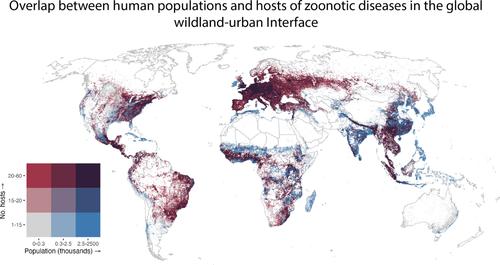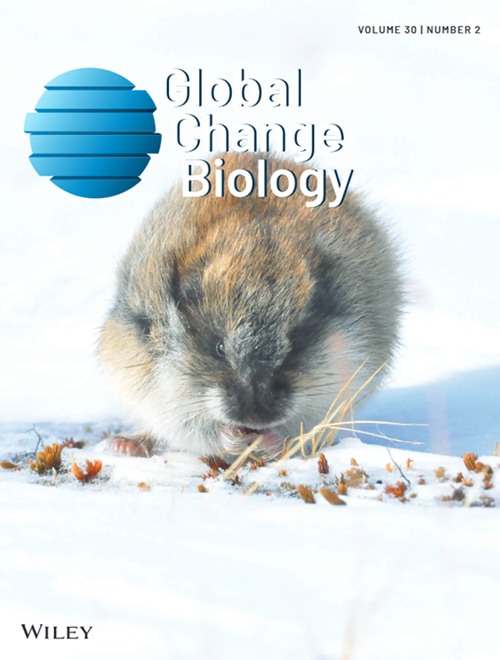Zoonotic Host Richness in the Global Wildland–Urban Interface
IF 10.8
1区 环境科学与生态学
Q1 BIODIVERSITY CONSERVATION
引用次数: 0
Abstract
Where human settlements abut or intermix with wildlands, people may encounter animals that host zoonotic pathogens which can spillover to cause human disease. Known as the wildland–urban interface (WUI), this zone occupies around 5% of the Earth's surface and is home to 3.5 billion people. The rapid spread of SARS-CoV-2 has demonstrated the importance of understanding risk factors for disease among an increasingly urbanized population. However, the contribution of the WUI to zoonotic disease risk is poorly understood. Here, we show that low-level host richness occurs throughout most of the global WUI, and 20% of the human WUI population live in zones of particularly high zoonotic potential, where more than 20 host species could occur. Zones of high zoonotic potential are concentrated in low–middle-income countries (LMICs) across equatorial Africa, Brazil, Central America, and Southeast Asia where vulnerability is further elevated by widespread poverty, inadequate housing, and lack of easily accessible healthcare. Three of four people living in WUIs with high host richness (520 million people) are in LMICs. Of this population, 35% (183 million) live in and around cities in West, East, and South Africa. This means that WUI-based populations of LMICs may face the double threat of high zoonotic potential and vulnerability to disease. Our results identify global priorities for monitoring exposure to zoonotic diseases in the rapidly expanding WUI.

求助全文
约1分钟内获得全文
求助全文
来源期刊

Global Change Biology
环境科学-环境科学
CiteScore
21.50
自引率
5.20%
发文量
497
审稿时长
3.3 months
期刊介绍:
Global Change Biology is an environmental change journal committed to shaping the future and addressing the world's most pressing challenges, including sustainability, climate change, environmental protection, food and water safety, and global health.
Dedicated to fostering a profound understanding of the impacts of global change on biological systems and offering innovative solutions, the journal publishes a diverse range of content, including primary research articles, technical advances, research reviews, reports, opinions, perspectives, commentaries, and letters. Starting with the 2024 volume, Global Change Biology will transition to an online-only format, enhancing accessibility and contributing to the evolution of scholarly communication.
 求助内容:
求助内容: 应助结果提醒方式:
应助结果提醒方式:


